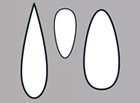2D Shapes for Outlines and Cross-sections (with reference to appropriate 3D shapes)
Choose the shape state that most resembles the two-dimensional disseminule outline or cross-section (excluding appendages such as spines or bristles or shallow indentations such as notches). Your disseminule need not match the state drawing exactly, as each drawing may represent a range of shapes.
+/- round |
elliptic/ biconvex |
fusiform |
ovate/obovate |
lanceolate/ oblanceolate |
linear to oblong |
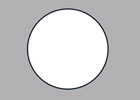
circular |

widest at the middle, biconvex (right) has pointier ends |
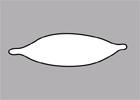
tapering at both ends, |

tapering at one end, |
narrower than ovate Lanceolate is widest at the bottom; oblanceolate at the top. The 3D shape is referred to as lanceoloid. When one end is pointed (left), the term teardrop-shaped is sometimes used. |

opposite sides are |
triangular |
sector-shaped |
polygonal |
trullate/obtrullate |
D-shaped/ C-shaped/reniform |
bilobed |

3-sided —
all sides flat |
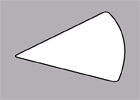
2 flat & 1 curved sides,
slice-of-pie-shaped |
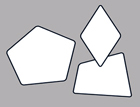 4- to 5-sided,
not necessarily symmetrical |
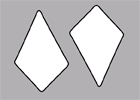 trowel-shaped, bilaterally symmetrical, similar to ovate/obovate except that the sides are flatter |
 1 side convex and the opposite side either flat (for D-shaped or plano-convex) or concave (C-shaped to reniform), not necessarily symmetrical |
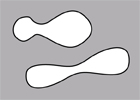
2 roundish ends joined by a narrower segment |
